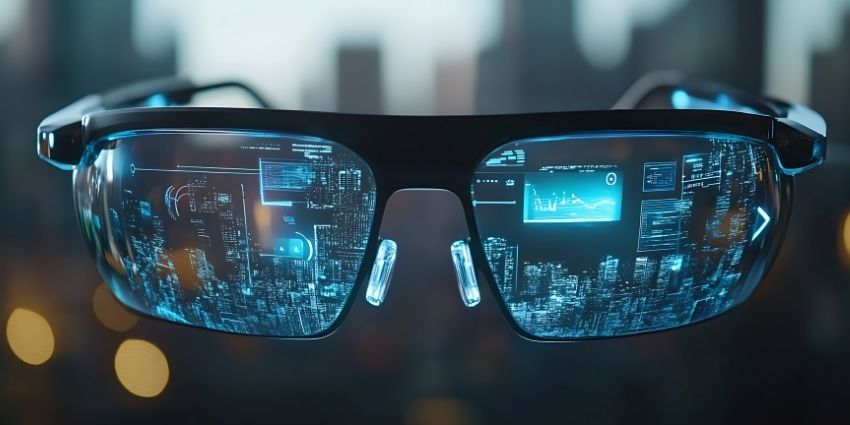Companies across industries are increasingly experimenting with XR and AI training use cases, desperate to overcome growing skill gaps, and scale their development strategies. Our own research found that training is one of the top applications for XR in the enterprise.
Adding AI into immersive learning experiences allows companies to develop more natural, spatial computing experiences, provide access to always-on coaching, design human-like avatars, and even gather more data. But the idea of investing in AI and XR at once can be daunting.
Business leaders are still reluctant to dive in – even though various studies have shown XR alone can help reduce training times, costs, and inefficiencies. If you’re feeling uncertain, these XR and training use cases will show you just how impactful intelligent immersive training can be.
5 XR and AI Training Use Cases in Action
As both extended reality technologies and artificial intelligence continue to evolve, the opportunities for companies investing in learning and development will only increase. Already, we’re seeing endless vendors experimenting with more versatile AI-powered avatars, enhanced sensor recognition, even machine learning to personalize training experiences in real-time.
Here are just some of the XR and AI training use cases worth exploring right now.
1. Virtual Onboarding and Knowledge Transfer
Effective onboarding is the key to better employee experiences, engagement, and productivity – it can even seriously reduce turnover rates. Plus, as workplaces continue to shift, and new generations join the team, great onboarding ensures crucial “tribal” knowledge isn’t lost, through knowledge transfer.
The trouble is most traditional onboarding processes are time-consuming and inconsistent. That’s particularly true now we’re in the age of hybrid and remote work. So, if you’re looking for XR and AI training use cases, onboarding is a great place to start.
Why? Because with XR, companies can build digital twins of offices, processes, and environments that users can access anywhere. They can literally step into a virtual meeting room, or warehouse, and experiment with tasks directly. AI can translate content into different languages, or adapt it to the needs of staff with different roles.
AI tools can also support and guide staff through the onboarding experience, even when colleagues and managers aren’t available. A great example comes from Sprouts Farmers Market – a company that uses XR and AI tools with Strivr to introduce teams to company culture, common tasks, and even food safety strategies.
The result? Sprouts has reduced employee onboarding time by 81% (from 4 hours to 45 minutes), and 83% of employees say they feel more motivated after a training session.
2. Compliance and Safety Simulations
One of the biggest benefits of training in XR is it’s safe. Even if teams are practicing skills in high-risk scenarios, they’re not putting themselves, or anyone else at risk. Plus, XR solutions, combined with AI, can help teams quickly learn how to stay safe in dangerous environments, while reducing compliance risks. In 2025, PIXO VR collaborated with J.J Keller & Associates on a dedicated solution for safety and compliance training.
Together, the teams built immersive, AI-enhanced training modules covering topics ranging from hazard recognition, to workplace health and safety. Teams can practice safety procedures, learn more about compliance standards, and even access real-time feedback from AI assistants.
The integration of AI also means business leaders can gather useful insights from training modules, discovering which compliance challenges teams are more likely to struggle with. Future updates to XR and AI training use cases could expand the opportunity here.
For instance, with AI, companies could create a system that automatically updates learning modules with new insights as regulations change. Or they could leverage sensors to dive deeper into risk components, tracking things like temperature and air quality in a warehouse.
3. Soft Skill Development with Virtual Agents
If you think we’re just facing a technical skills crisis, think again. The soft skills gap costs the US an estimated $160 billion annually. AI and XR combined can help teams fine-tune soft skills in a safe, compliant environment, offering immediate feedback and guidance.
With an intuitive platform, companies can build XR environments complete with AI agents that act, and respond exactly like human beings. These agents can use computer vision, natural language processing, and machine learning to simulate learner interactions.
In the customer care space, that might mean an agent acts like an irate customer, and responds to an employee’s tone and language. In the healthcare space, you might have agents that act like nervous patients, preparing to undergo surgery.
Companies like Vodafone and Deutsche Telekom are already experimenting with these XR and AI training use cases, creating modules that guide customer service reps through scenarios with “simulated customers”. Deutsche Telekom found their strategy led to a 10% improvements in soft skills in just one session.
4. Technical Skill Development in High-Risk Environments
As mentioned above, XR’s low-risk nature makes it an excellent solution for practicing skills in dangerous environments. Surgeons can practice procedures on virtual avatars without risking the safety of real-world patients. Firefighters can practice navigating burning buildings, and engineers can experiment with heavy machinery.
Immersive learning allows employees to explore these scenarios hands-on, developing muscle memory. AI algorithms make it easier to create an adaptive learning experience that adjusts to each employee’s specific strengths and weaknesses.
In the healthcare space, for instance, NextGen Surgery is experimenting with AI, BCI, Neural interfaces, and XR. AI-processed real-time data allows modules to instantly adapt to the needs of learners in high-pressure environments, adjusting the learning curve or providing extra feedback when necessary.
Similarly, in manufacturing, companies like Adient are exploring the benefits of augmented reality with AI, allowing users to access digital workflows in real-time, translate information, and even store data and share it with colleagues for collaborative development.
5. Leadership and Change Management Training
This is one of the most exciting XR and AI training use cases – but it’s also one that’s frequently overlooked. Workplaces are changing fast, and leaders need to adapt quickly, adjusting to new tech, hybrid work policies, and even new generations of staff.
AI-enhanced XR solutions provide an incredible way to simulate complex leadership situations. They can create environments that help leaders explore what might happen the next time they introduce a new type of technology or adjust their processes.
AI avatars can then respond to these scenarios. They can help leaders practice decision-making, conflict resolution strategies, and more in a controlled environment. Those avatars are becoming increasingly powerful too. In 2025, for instance, Bodyswaps 3.0 introduced a new immersive learning update that allows users to create highly realistic AI-driven simulations.
These avatars can respond to employees’ learning choices, record information and data for in-depth performance evaluation, and provide instant feedback.
XR & AI Training Use Cases: the ROI is Real
Innovators have been promising to revolutionize learning and development for years, often without much success. It’s only natural that today’s business owners would be skeptical about exploring a new learning method. But immersive technology combined with AI can potentially change how we share and develop knowledge for good.
From shrinking onboarding times to accelerating the growth of soft and technical skills, AI and XR are working together to prepare teams for the next era of work.
Want to learn more? Dive into our comprehensive guide to AI and immersive learning here, or discover how you can find the best vendors for your business needs here.







